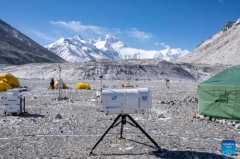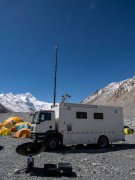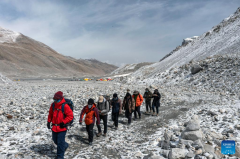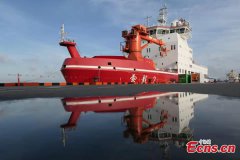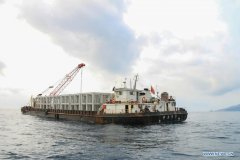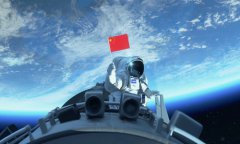Expedition hauls tons of plastic out of remote Hawaii atolls
A crew has returned from the northernmost islands in the Hawaiian archipelago this week with a boatload of marine plastic and abandoned fishing nets that threaten to entangle endangered Hawaiian monk seals and other animals
April 22, 2021, 9:29 PM
5 min read
Share to FacebookShare to TwitterEmail this articleIn this April 5, 2021 photo provided by Matthew Chauvin, a juvenile Hawaiian monk seal rests on top of a pile of ghost nets on the windward shores of Laysan Island in the Northwestern Hawaiian Islands. A crew has returned from the remote Northwestern Hawaiian Islands with a boatload of marine plastic and abandoned fishing nets that threaten to entangle endangered Hawaiian monk seals and other marine animals on the tiny, uninhabited beaches stretching for more than 1,300 miles north of Honolulu. (Matthew Chauvin, Papahānaumokuākea Marine Debris Project via AP — NOAA/NMFS Permit No. 22677)
HONOLULU -- A crew returned from the northernmost islands in the Hawaiian archipelago this week with a boatload of marine plastic and abandoned fishing nets that threaten to entangle endangered Hawaiian monk seals and other animals on the uninhabited beaches stretching more than 1,300 miles north of Honolulu.
The cleanup effort in Papahanaumokuakea Marine National Monument lasted three weeks and the crew picked up more than 47 tons (43 metric tons) of "ghost nets" and other marine plastics such as buoys, crates, bottle caps and cigarette lighters from the shores of the Northwestern Hawaiian Islands.
The monument, the largest protected marine reserve in the U.S. and one of the largest in the world, is in the northern Pacific Ocean and surrounded by what is known as the Great Pacific Garbage Patch — a huge gyre of floating plastic and other debris that circulates in ocean currents. The islands act like a comb that gather debris on its otherwise pristine beaches.
The ecosystem in the monument is diverse, unique and one of the most intact marine habitats on Earth. But the beaches are littered with plastic and nets that ensnare endangered Hawaiian monk seals — of which there are only about 1,400 left in the world — and green turtles, among other wildlife.
The crew removed line from a monk seal on the expedition’s first day.
With virtually no predators, the islands are a haven for many species of seabirds, and Midway Atoll is home to the largest colony of albatross in the world. There, the land is littered with carcasses of birds that have ingested plastics and died.
The cleanup was organized by the nonprofit Papahanaumokuakea Marine Debris Project, which partners with the state of Hawaii and federal agencies, including the National Oceanic and Atmospheric Administration and the U.S. Fish and Wildlife Service.
Kevin O’Brien, president of the new organization and a former NOAA employee, said the work is expensive but important.
“Talking to some of these folks that are up there for the monk seal camps every summer, they’ll talk about specific nets that have been there for several years,” O’Brien said. “So a trip like this where we’re able to yank pretty much everything we see can have an impact.”
The latest expedition focused on the shorelines of the various atolls, and a trip later this year will remove nets from the reefs that surround the islands.
A NOAA study estimated that the shores of the Northwestern Hawaiian Islands accumulate about 57 tons (52 metric tons) of debris each year. An analysis of the upcoming reef removal is expected to estimate the total amount of debris that gathers on both the beaches and the critical reef ecosystems that surround them, giving researchers a more complete view of the problem.
The crew of 12, which included people from the marine debris project, federal agencies, Hawaii and a local university, removed debris from Laysan Island, Lisianski Island, Midway Atoll, French Frigate Shoals and Kure Atoll.
Matt Saunter, president of the Kure Atoll Conservancy, was among those working on the expedition. He's spent more than a decade doing monthslong field work on Kure Atoll. He rode out the first nine months of the coronavirus pandemic isolated there with a small crew and returned in November to a new world.
He said being back on his “home away from home” in a new role was a unique experience.
